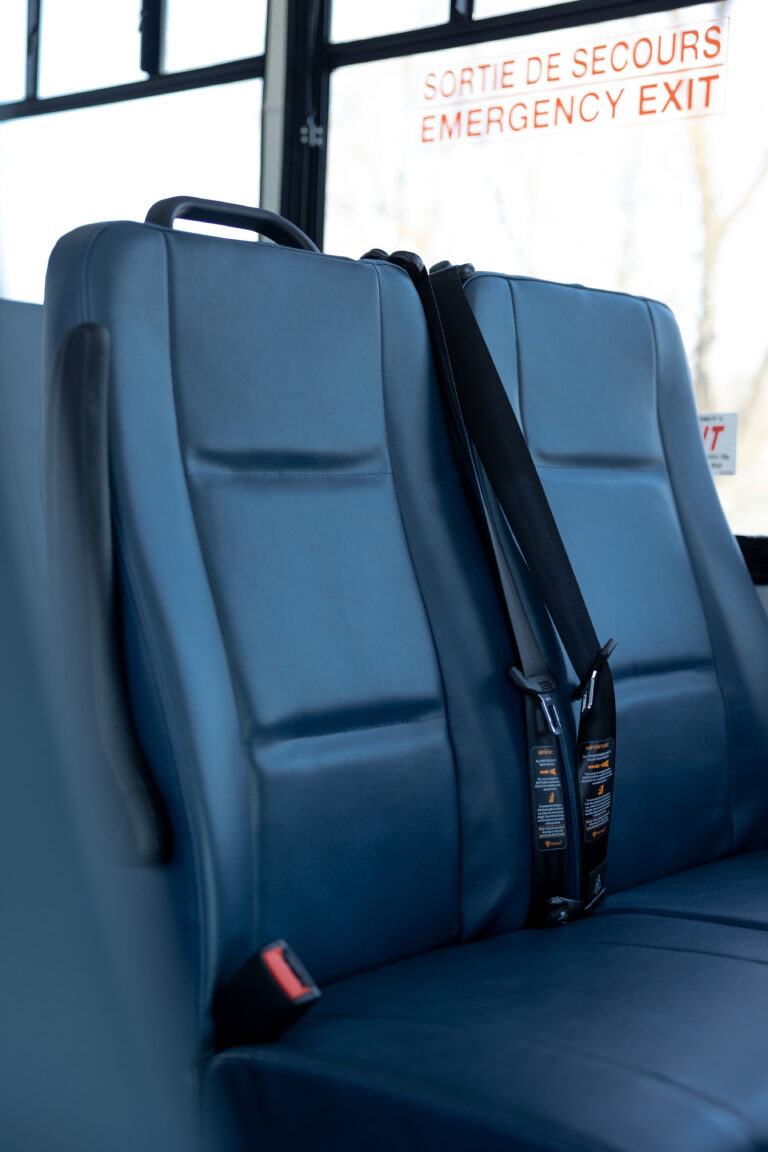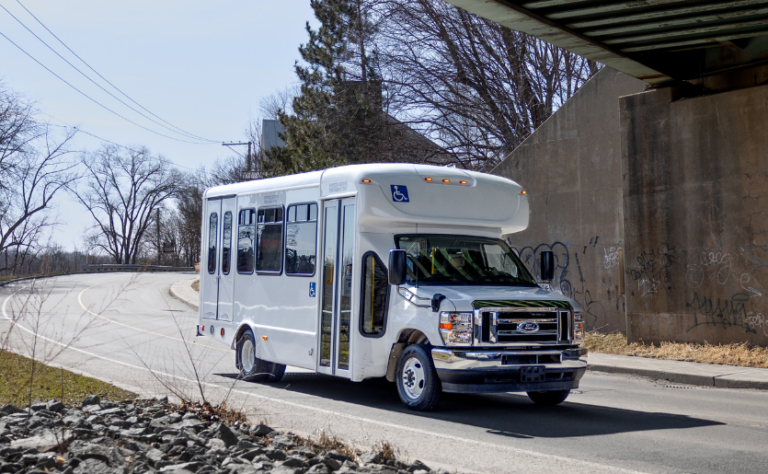When it comes to the safety of passengers, making sure the weight of the bus respects vehicle regulations and capacities is crucial. It’s important to be able to have a good balance of safety, functionality, efficiency, and aesthetics when it comes to selecting a bus. This article is meant to help guide you and to make sure you’re asking the right questions before the purchase.
Respecting weight capacity isn’t just about regulatory compliance; it directly impacts passenger safety, vehicle longevity, and operational effectiveness. Whether you’re in the public transit, medical, or shuttle bus industry, choosing a company that considers weight limit when building your vehicle cannot be overstated.

Importance of Respecting Weight Capacity in Buses
Passenger Safety
The primary and non-negotiable reason to respect weight capacity limits is passenger safety. Overloading a bus can compromise its stability and handling, increasing the risk of accidents, especially during sudden maneuvers or emergency stops. Respecting the weight limit means that every person involved, ranging from the manufacturer to the dealership, has taken every precaution to ensure that they’re delivering a safe vehicle that is compliant with industry guidelines. guarantees that the bus functions within its intended specifications, placing the well-being of passengers as the top priority.
Respecting weight limits ensures that the bus operates within its designed parameters, prioritizing the well-being of passengers.
Vehicle Longevity and Maintenance Costs
Exceeding weight limits places undue stress on the bus’s structural components, leading to accelerated wear and tear. This can result in higher maintenance costs and a shorter lifespan for the vehicle. By respecting weight capacity, operators can mitigate the risk of mechanical failures and extend the longevity of their fleet, ultimately reducing overall maintenance expenses.

Placing a bus order: What’s Negotiable and Non-negotiable
Once you’re ready to place your order, some components can be negotiated based on the customer’s needs, based on industry, and operational requirements.
Negotiable items when purchasing a bus
Interior Configurations
In terms of the interior, several options can be incorporated into the configuration of the bus to accommodate the customer. Whether it’s installing a wheelchair lift, custom headrests, a camera system, or an HVAC with specialized filtration, a bus dealership is well-prepared to provide a vehicle that precisely caters to the unique needs of the customer.
The technological aspect is also something that can be discussed prior, whether that means installing seat belt monitoring and air filtration, a speaker system, an entertainment system, WIFI, or real-time tracking solutions for fleet management. These features can be integrated into your vehicle so that the bus meets the customer’s requirements.

Non-negotiable items when purchasing a bus
Weight Capacity
As mentioned earlier, the bus’s payload capacity is strictly non-negotiable for safety reasons. Depending on the size of the bus and the configuration, the bus manufacturer must be compliant with the weight limit of the vehicle. Overpromising features to adjust the pricing can eventually lead to security risks for passengers and employees. This is why buyers must request a certified weigh ticket before delivery.
Safety Standards
The bus must respect compliance with safety regulations standards for passenger safety and well-being. As a dealership, Crestline follows rigorous guidelines when it comes to structural integrity, emergency exits, and accessibility features. Following structural integrity standards ensures that the bus is strong and durable, capable of enduring different conditions and keeping passengers safe in emergencies. In addition, there are several regions where the laws mandate the installation of three-point safety belts in buses to enhance passenger safety and reduce the risk of injuries during transit. Organizations operating buses must be well-versed in their legal obligations regarding the implementation of these safety measures to ensure compliance with regulations and prioritize the well-being of passengers.
Consequences of Exceeding Weight Capacity
Compromised Safety
Exceeding weight limits is not just a technical concern; it directly impacts the safety of everyone onboard. This includes passengers relying on the bus, the drivers navigating through various routes, and other drivers. Surpassing these limits when building the bus increases the risk of accidents, making it imperative to prioritize weight restrictions.
Structural Implications
Overloading the bus can inflict substantial structural damage, compromising the integrity of the entire vehicle. This potential damage will not only lead to costly repairs but, in severe cases, may render the bus unsafe for continued use. By respecting the weight limits, we’re ensuring the safety of passengers and drivers but also the longevity and reliability of the bus itself.
Legal Ramifications
In addition, there are legal consequences associated with violating weight restrictions. Government authorities closely monitor compliance to uphold public transportation safety standards. Instances of exceeding weight limits can lead to legal repercussions, including fines and penalties. Prioritizing compliance with these regulations is crucial, not only to avoid legal consequences but also to contribute to the broader goal of maintaining a secure and well-regulated public transportation system.




